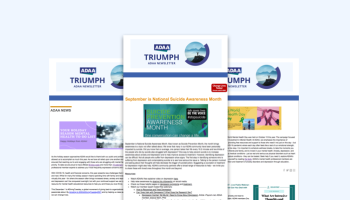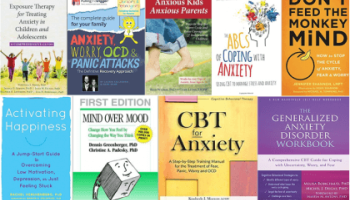Our Mission
ADAA raises awareness about the causes of and best treatments for anxiety, depression, and related disorders by disseminating cutting edge science, promoting evidence-based clinical practice, and educating professionals and the public.
Our Vision
ADAA envisions a future where all affected by anxiety, depression, and related disorders can access the help they need to lead fulfilling lives.
ADAA is the only multidisciplinary organization uniting top clinicians, psychiatrists, psychologists, researchers, and early career professionals focused on anxiety, depression, and related disorders. Our global members come from diverse fields—medicine, counseling, psychology, social work, neuroscience, and more.
Read about ADAA's History
Special Tributes
- Meet our 2020 Founders and President Awardees
- ADAA - My Professional Cradle by ADAA member Eda Gorbis, PhD, LMFT
- Untold Anxiety - The Birth of a Treatment That Worked by Judith Hoare
- Read a 40th Tribute by ADAA 1st President Robert Dupont, MD
- Read a Tribute to ADAA Cofounder Jerilyn Ross
- Remembering ADAA Executive Director (2010-2015) Alies Muskin
About ADAA
Mission Statement
ADAA's mission focuses on improving quality of life for those with anxiety, depression, OCD, PTSD, and co-occurring disorders through education, practice, and research.
Learn More
Board of Directors
ADAA's Board of Directors oversee the long-term strategic plan for ADAA, enabling the organization to advance its mission, vision and strategic objectives.
Learn More
ADAA Impact, Strategic Plan, and Financial Reports
Learn about ADAA's strategic plan, and our public and professional impact last year.
Learn More
Partner with Us
At the Anxiety and Depression Association of America (ADAA), we work with like-minded national and international nonprofits, companies, mental health organizations, media and publishing partners, corporate donors, and influencers who support our mission.
Learn More
ADAA Advertising & Sponsorship Media Kit
ADAA’s unique interlinked consumer and professional mission is focused on improving quality of life for those struggling with anxiety, depressive, obsessive-compulsive, and trauma-related disorders.
Learn More
Join Our Team
ADAA is an established and fast-growing non-profit international membership association dedicated to the prevention, treatment, and cure...
Learn More












